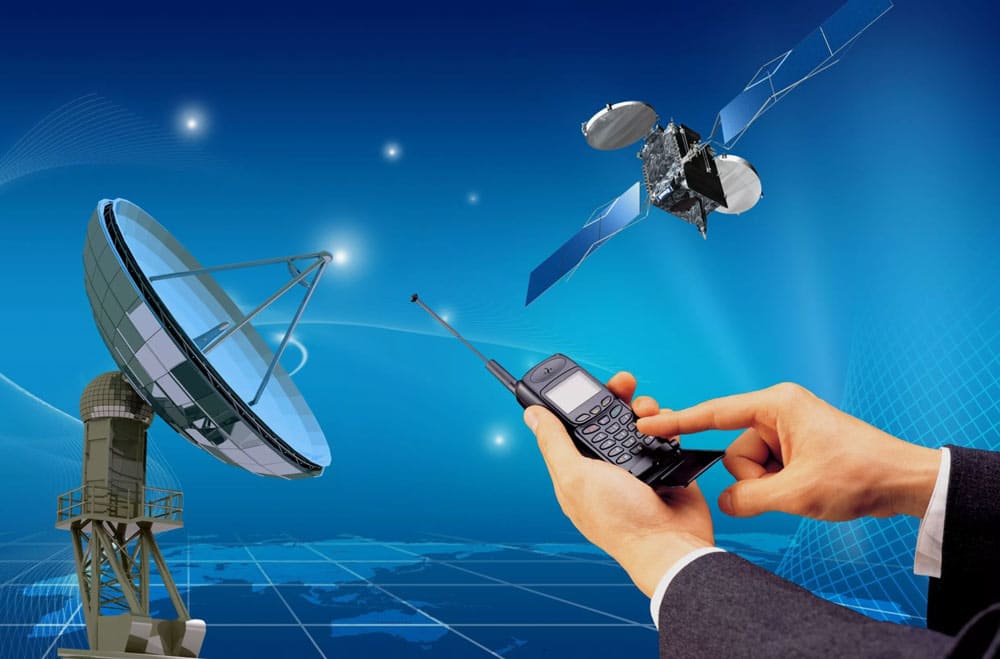Since the launch of the first artificial satellite in 1957, satellite communications have rapidly developed. Initially designed for scientific research and military purposes, the technology quickly entered the civilian sphere, revolutionising communication and information exchange.
Satellite communications are crucial for telephone communications, particularly in remote and inaccessible regions where landline installation is expensive and technically challenging. These systems have provided millions of people worldwide with reliable telephone access that was previously unattainable.
This article covers the early years of satellite communications, from scientific experimentation to the first commercial applications
Satellite communications have their origins in scientific experiments conducted in the mid-20th century. The Soviet Union launched the first artificial satellite, Sputnik 1, in 1957. Although its primary purpose was to study the upper atmosphere and outer space, its launch marked the beginning of a new era in space technology and telecommunications.
Other countries, such as the USA, France, and Japan, began developing their own satellite programmes soon after this event. In 1962, the United States launched Telstar, the first commercial communications satellite. Telstar enabled transatlantic telephone and television broadcasting between North America and Europe.
Over the following years, satellite communications became increasingly sophisticated and affordable. Intelsat, Eutelsat, and Inmarsat have been instrumental in developing international satellite communications, providing global telephone and television broadcasts.
Modern satellite systems offer high performance, low latency, and global coverage
Modern satellite systems, such as Iridium, Globalstar, and Thuraya, provide high-quality voice and data communication services globally.
Satellite telephony has a key advantage in providing communication in remote and inaccessible regions where terrestrial infrastructure is absent or damaged by natural disasters or military conflicts. Satellite phones are essential tools for rescue services, humanitarian organizations, and expeditions, enabling them to stay connected in harsh environments.
Satellite communications are crucial for maritime and aviation communication. They allow ships and aircraft on the high seas or in the air to communicate reliably with coastal stations and control centres through satellite links.
New technologies and trends in satellite communications
In recent years, there has been a growing interest in Low Earth Orbit (LEO) satellite systems, in addition to traditional geostationary satellites. Companies such as SpaceX, with its Starlink project, OneWeb, and Amazon, with its Kuiper project, plan to deploy thousands of small satellites in low Earth orbit to provide high-speed internet and telecoms services worldwide.
The new LEO systems offer lower latency, high bandwidth, and global coverage. These advancements have the potential to revolutionise satellite communications and provide high-speed internet access to even the most remote areas of the planet.
Additionally, advanced technologies such as ultra-wideband antennas, adaptive beamforming, and advanced coding algorithms have been introduced to the field of satellite communications. These innovations enable more efficient use of the spectrum, improve communication quality, and increase satellite bandwidth.
The future of satellite telephony: integration with terrestrial networks and new opportunities
Satellite telephony will remain crucial for global connectivity, particularly in underdeveloped or non-existent terrestrial communication areas. In the future, satellite systems will integrate more with terrestrial networks, providing seamless and uninterrupted communication even when switching between networks.
Integrated satellite/terrestrial terminals and intelligent network switching technologies will allow users to maintain uninterrupted connectivity while travelling between different network coverage areas.
Furthermore, satellite communications are expected to give rise to new applications and services. Satellite systems have a wide range of applications, including vehicle tracking, environmental monitoring, unmanned aerial vehicle control, and telemedicine services in remote areas.
Conclusion
Satellite communications have evolved significantly over the past few decades, from scientific experiments to global systems that provide reliable communication worldwide. The technology has demonstrated its vital importance and versatility.
Satellite communications have revolutionised telephony, providing reliable voice access to millions of people in remote and inaccessible regions. They are also essential for rescue services, humanitarian organisations, and travellers, enabling communication in extreme conditions.
The role of satellite communications in modern telephony will continue to increase with the development of new technologies, such as low-orbit satellite systems and advanced coding algorithms. Integration with terrestrial networks and the emergence of new applications and services will create new opportunities for global connectivity and push the boundaries of telecommunications.
Satellite communications have revolutionised communication and catalysed social and economic development, providing access to information and resources even in the most remote corners of our planet. Its contribution to modern telephony and telecommunications cannot be overestimated, and it will continue to play a key role in the development of the global communications infrastructure in the coming years.


